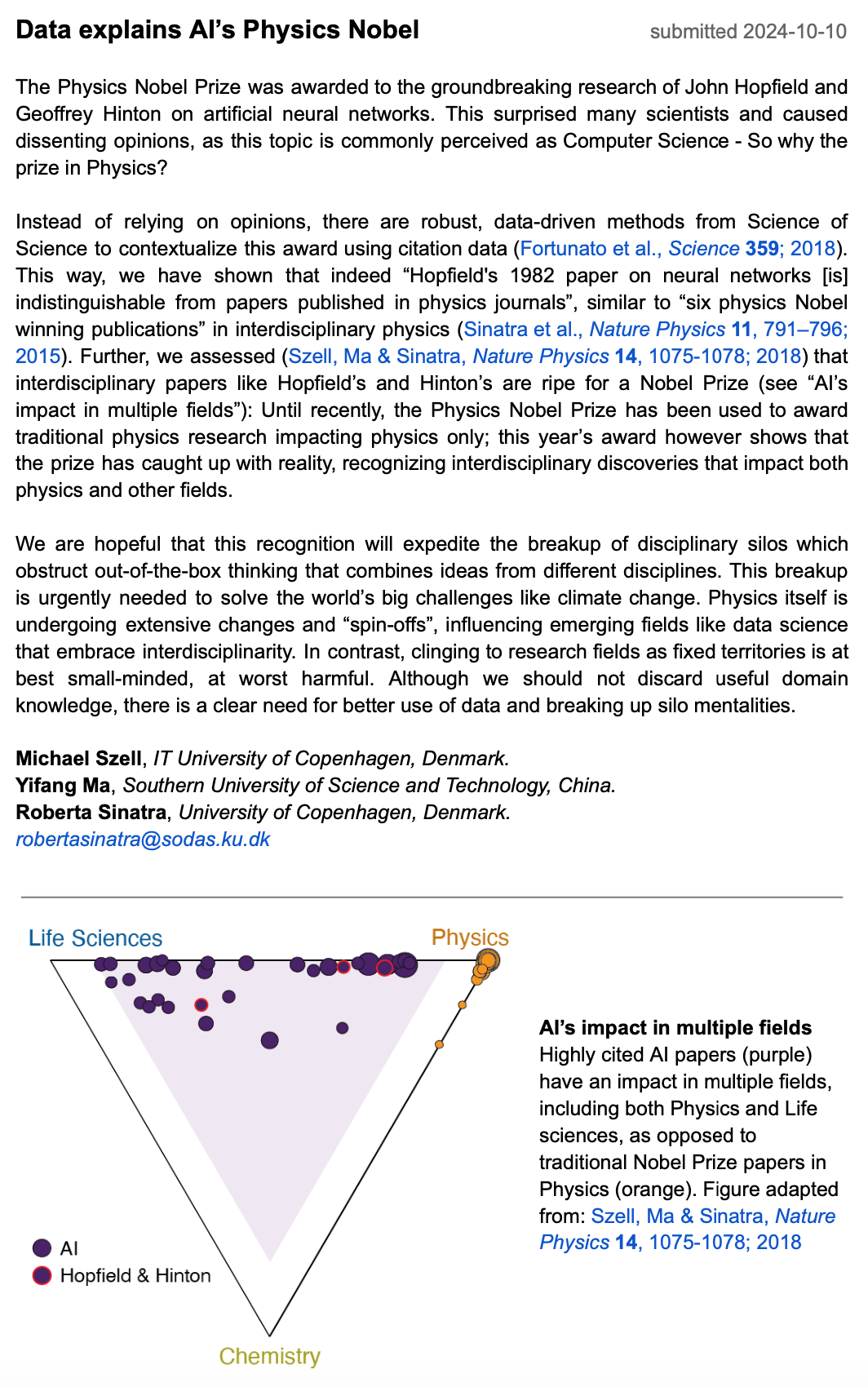Two weeks ago the Nobel prize in physics was awarded to Hopfield and Hinton for their research on artificial neural networks. This caused quite some uproar, especially by many of our computer science and physics colleagues. As original-physicists-turned-data-scientists-dabbling-in-AI, who have done data-driven Science of Science research exactly on the crucial role of Hopfield and Hinton’s papers in physics, we penned a comment pointing to our clarifying research which was now published as a correspondence in Nature:
Was the Nobel prize for physics? Yes — not that it matters, by M. Szell, Y. Ma, and R. Sinatra
Here the entire correspondence:
The award of the 2024 Nobel Prize in Physics to John Hopfield and Geoffrey Hinton for their groundbreaking research on artificial neural networks (Nature 634, 523–524; 2024) has caused consternation in some quarters. Surely this is computer science, not physics?
Existing data can help to inform this debate. Almost a decade ago, two of us (M.S. and R.S.) co-authored an analysis of referencing and citation patterns that explicitly placed Hopfield’s seminal 1982 paper on neural networks among 3.2 million interdisciplinary papers in non-physics journals that were “indistinguishable from papers published in physics journals”. Six other physics Nobel-winning papers were also in this set (R. Sinatra et al. Nature Phys. 11, 791–796; 2015).
The physics Nobel prize has until recently rewarded conventional ‘core’ physics research, even though Hopfield’s and Hinton’s papers were ripe for recognition (M. Szell et al. Nature Phys. 14, 1075–1078; 2018). We hope that this year’s prize will expedite the breakdown of silos that obstruct thinking across disciplines. Clinging to the idea of research fields as fixed territories is at best small-minded, and at worst harmful, when it comes to solving global challenges such as climate change.
Our original version – before editorial changes – provides a slightly different angle and an instructive figure (that was cut for publication):

